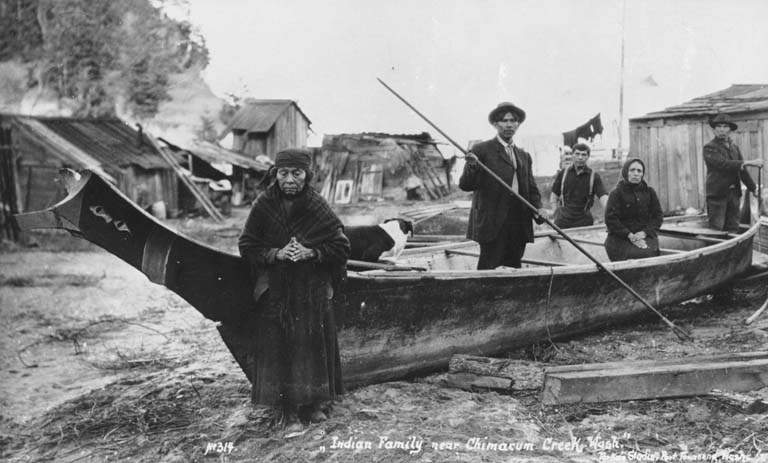|
Thuja Plicata
''Thuja plicata'' is an evergreen coniferous tree in the cypress family Cupressaceae, native to western North America. Its common name is western redcedar (western red cedar in the UK), and it is also called Pacific redcedar, giant arborvitae, western arborvitae, just cedar, giant cedar, or shinglewood. It is not a true cedar of the genus ''Cedrus''. Description ''Thuja plicata'' is a large to very large tree, ranging up to tall and in trunk diameter. Trees growing in the open may have a crown that reaches the ground, whereas trees densely spaced together will exhibit a crown only at the top, where light can reach the leaves. The trunk swells at the base and has shallow roots. The bark is thin, gray-brown and fissured into vertical bands. As the tree ages, the top is damaged by wind and replaced by inferior branches. The species is long-lived; some trees can live well over a thousand years, with the oldest verified aged 1,460. The foliage forms flat sprays with scale-like l ... [...More Info...] [...Related Items...] OR: [Wikipedia] [Google] [Baidu] |
Vancouver
Vancouver ( ) is a major city in western Canada, located in the Lower Mainland region of British Columbia. As the most populous city in the province, the 2021 Canadian census recorded 662,248 people in the city, up from 631,486 in 2016. The Greater Vancouver area had a population of 2.6million in 2021, making it the third-largest metropolitan area in Canada. Greater Vancouver, along with the Fraser Valley, comprises the Lower Mainland with a regional population of over 3 million. Vancouver has the highest population density in Canada, with over 5,700 people per square kilometre, and fourth highest in North America (after New York City, San Francisco, and Mexico City). Vancouver is one of the most ethnically and linguistically diverse cities in Canada: 49.3 percent of its residents are not native English speakers, 47.8 percent are native speakers of neither English nor French, and 54.5 percent of residents belong to visible minority groups. It has been consistently rank ... [...More Info...] [...Related Items...] OR: [Wikipedia] [Google] [Baidu] |
Hinokitiol
Hinokitiol (β-thujaplicin) is a natural monoterpenoid found in the wood of trees in the family Cupressaceae. It is a tropolone derivative and one of the thujaplicins. Hinokitiol is used in oral and skin care products, and is a food additive used in Japan. History Hinokitiol was discovered by a Japanese chemist Tetsuo Nozoe in 1936. It was isolated from the essential oil component of the heartwood of '' Taiwanese hinoki'', from which the compound ultimately adopted its name. Hinokitiol is the first non-benzenoid aromatic compound identified. The compound has a heptagonal molecular structure and was first synthesyzed by Ralph Raphael in 1951. Due to its iron-chelating activity, hinokitiol has been called an "Iron Man molecule" in the scientific media, which is ironic because Tetsuo is translated into English as "Iron Man". Taiwanese hinoki is native to East Asian countries, particularly to Japan and Taiwan. Hinokitiol has also been found in other trees of the ''Cupressaceae'' fami ... [...More Info...] [...Related Items...] OR: [Wikipedia] [Google] [Baidu] |
Animal Studies
Animal studies is a recently recognised field in which animals are studied in a variety of cross-disciplinary ways. Scholars who engage in animal studies may be formally trained in a number of diverse fields, including geography, art history, anthropology, biology, film studies, geography, history, psychology, literary studies, museology, philosophy, communication, and sociology. They engage with questions about notions of "animality," "animalization," or "becoming animal," to understand human-made representations of and cultural ideas about "the animal" and what it is to be human by employing various theoretical perspectives. Using these perspectives, those who engage in animal studies seek to understand both human-animal relations now and in the past as defined by our knowledge of them. Because the field is still developing, scholars and others have some freedom to define their own criteria about what issues may structure the field. History As an interdisciplinary subject, anim ... [...More Info...] [...Related Items...] OR: [Wikipedia] [Google] [Baidu] |
Basic Research
Basic research, also called pure research or fundamental research, is a type of scientific research with the aim of improving scientific theory, theories for better understanding and prediction of natural or other phenomena. In contrast, applied research uses scientific theories to develop technology or techniques which can be used to intervene and ''alter'' natural or other phenomena. Though often driven simply by curiosity,"Curiosity creates cures: The value and impact of basic research , National Institute of General Medical Sciences, National Institutes of Health. basic research often fuels the technological innovations of applied science. The two aims are often practiced simultaneously in coordinated research and development. In addition to innovations, b ... [...More Info...] [...Related Items...] OR: [Wikipedia] [Google] [Baidu] |
Post-harvest Losses (vegetables)
Post-harvest losses of vegetables and fruit occur at all points in the value chain from production in the field to the food being placed on a plate for consumption. Post-harvest activities include harvesting, handling, storage, processing, packaging, transportation and marketing. Losses of horticultural produce are a major problem in the post-harvest chain. They can be caused by a wide variety of factors, ranging from growing conditions to handling at retail level. Not only are losses clearly a waste of food, but they also represent a similar waste of human effort, farm inputs, livelihoods, investments, and scarce resources such as water. Post-harvest losses for horticultural produce are, however, difficult to measure. In some cases everything harvested by a farmer may end up being sold to consumers. In others, losses or waste may be considerable. Occasionally, losses may be 100%, for example when there is a price collapse and it would cost the farmer more to harvest and market t ... [...More Info...] [...Related Items...] OR: [Wikipedia] [Google] [Baidu] |



.png)